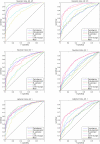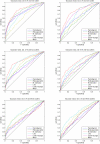Robust regression for periodicity detection in non-uniformly sampled time-course gene expression data
- PMID: 17605777
- PMCID: PMC1934414
- DOI: 10.1186/1471-2105-8-233
Robust regression for periodicity detection in non-uniformly sampled time-course gene expression data
Abstract
Background: In practice many biological time series measurements, including gene microarrays, are conducted at time points that seem to be interesting in the biologist's opinion and not necessarily at fixed time intervals. In many circumstances we are interested in finding targets that are expressed periodically. To tackle the problems of uneven sampling and unknown type of noise in periodicity detection, we propose to use robust regression.
Methods: The aim of this paper is to develop a general framework for robust periodicity detection and review and rank different approaches by means of simulations. We also show the results for some real measurement data.
Results: The simulation results clearly show that when the sampling of time series gets more and more uneven, the methods that assume even sampling become unusable. We find that M-estimation provides a good compromise between robustness and computational efficiency.
Conclusion: Since uneven sampling occurs often in biological measurements, the robust methods developed in this paper are expected to have many uses. The regression based formulation of the periodicity detection problem easily adapts to non-uniform sampling. Using robust regression helps to reject inconsistently behaving data points.
Availability: The implementations are currently available for Matlab and will be made available for the users of R as well. More information can be found in the web-supplement 1.
Figures






References
-
- Robust regression for periodicity detection in non-uniformly sampled time-course gene expression data. Supplementary website http://www.cs.tut.fi/sgn/csb/robustregper/ - PMC - PubMed
-
- Schena M, Shalon D, Davis R, Brown P. Quantitative Monitoring of Gene Expression Patterns with a Complementary DNA Microarray. Science. 1995;270:467–470. - PubMed
-
- Wichert S, Fokianos K, Strimmer K. Identifying periodically expressed transcripts in microarray time series data. Bioinformatics. 2004;20:5–20. - PubMed
Publication types
MeSH terms
Grants and funding
LinkOut - more resources
Full Text Sources

